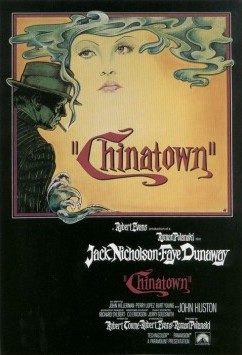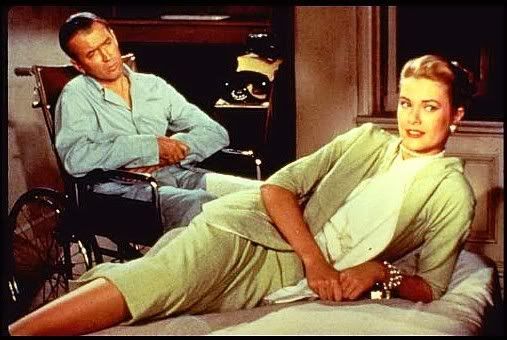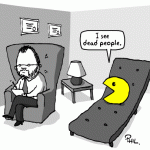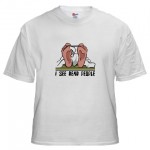Category Archives: required
Storyboarding
The Red Scare and the Hollywood Blacklist: For Tuesday
As you’ll see on the calendar page, our viewing for Tuesday is The Front, a 1976 comedy starring Woody Allen about McCarthyism’s impact on the entertainment industry and Trumbo, a 2007 documentary about Dalton Trumbo, a well known screenwriter who was blacklisted but continued to write and and win awards under psuedonyms. Both are available for streaming on Netflix.
Also, please take a look the following films. Together, they’ll give you some additional context for the two films as well as our reading from Whitfield’s The Culture of the Cold War. Most of these are already in our Delicious feed.
“Hollywood ‘Red’ Probe Begins, 1947/10/20 (1947)” A newsreel on the beginning of HUAC’s probe of alleged communist activity and influence in Hollywood.
I Married a Communist(a.k.a. The Woman on Pier 13)(1949). An RKO feature starring Robert Ryan and an exemplary red scare propaganda film along with My Son John and I Was A Communist for the FBI.
“The Hollywood Ten” (1950), a 16mm short critical of McCarthyism and the blacklist. The director, John Berry, was blacklisted after the film’s release and fled to France where he worked until his return to the US in the 1970s.
“Make Mine Freedom” (1948). A propaganda cartoon on the virtues of democracy and what Americans stand to lose if communism should prevail.
“Communism,” a 1952 educational film about the threat of Soviet Communism.
For Discussion: Noir Style, Light and Color in Blade Runner, Chinatown, and Taxi Driver
Click on the thumbnails to view full image.
Chinatown (1974) and the Recommended Viewing for Thursday
 There are several ways to watch Chinatown online. It is available for “rent” for around $3 from Amazon VOD and the iTunes store. Click here for links to the movie on both services.
There are several ways to watch Chinatown online. It is available for “rent” for around $3 from Amazon VOD and the iTunes store. Click here for links to the movie on both services.
It is also available to you on Swank’s digital campus site for free. The copy on Swank seems to have been cropped to a 4:3 aspect ratio (that means it’s not widescreen like the original) and the quality may be not quite as good as the paid versions. But it is still Chinatown, it is still superb, and it is free. I will email you with instructions for how to access the digital campus from here at Baruch and from off campus as well. Because there are copyright issues involved, I cannot post the access information in this public space.
Kiss Me Deadly and Touch of Evil are available via the digital campus as well. If you have not seen them, please do. They will be on the midterm.
The recommended films this week are Taxi Driver and Blade Runner. While I will not hold you responsible for them, I suggest you watch them if you can. I realize there is a paper due on Thursday, but if you have the time to watch the recommended films, you definitely should. Taxi Driver is available for streaming from Netflix and Blade Runner is available on line at stagevu.com. Click here for the link.
Writing Assignment #2: Be the Critic
Double spaced, standard 12pt font (Times New Roman, Arial, Verdana, etc.), approximately 3 pages, stapled.
Due Thursday, Feb. 25th in class.
You have two options for this assignment:
1) Imagine that you are a contributor to a collection of brief essays on the influence of classic film noir on contemporary film. Choose a movie you’ve seen recently that you feel owes some significant debt to film noir of the 1940s and 1950s and discuss how your movie draws on, pays homage to, enters into conversation with, updates, or subverts the various thematic or stylistic elements that are typically associated with film noir. Be sure to draw on Schrader, Naremore, Grossman, or Borde and Chaumeton where approporiate to back up your arguments — chapter 5 of Naremore (now on the readings page) might prove especially useful. If you choose to work with Schrader (and you probably will want to), be mindful of Naremore’s take on his famous essay in chapter 1 of More Than Night. Try to be as specific as possible when talking about your movie — feel free to focus on individual scenes or even shots rather than merely broad themes. While you may wish to briefly summarize the movie you’ve chosen, please don’t spend a whole lot of time on plot summary — no more than a brief paragraph. The bulk of your essay should be devoted to analysis.
2) Imagine that you are a film critic writing for a special issue of a journal of film criticism devoted to the key ideas in Laura Mulvey’s famous essay, “Visual Pleasure and Narrative Cinema.” Choose a recent film and discuss it through the theoretical lens Mulvey offers us in her essay, applying the concepts she uses to the themes, individual scenes, or even single shots of your movie. Do, in other words, with your movie what Mulvey does with Vertigo, Marnie, and Rear Window toward the end of her essay. (If you are interested in discussing a movie that you feel subverts the structures of looking that Mulvey talks about, or if you wish to offer a critique of Mulvey’s persepctive in relation to a given film, please let me know and I will give you several critiques and analyses of Mulvey to work with.) Be as specific as possible and use Mulvey to support your arguments. To make your life easier, here are some notes on Mulvey that outline her central ideas.
Regardless of which option you choose, try to be as focused and as specific in your discussion as possible. You don’t have a lot of room for a broad, wide ranging discussion so try to keep it somewhat narrow. Please feel free to run ideas by me or to show me drafts. I will be happy to discuss any aspect of this assignment with you and will help you work out your arguments as best I can. What I am looking for here, more than anything else, is how well you articulate and support your arguments with evidence from your movies and the text. If you have questions about this assignment, please feel free to post theme here in a comment.
Reading Mulvey
 For Tuesday I’ve asked you to read British film theorist Laura Mulvey‘s hugely important and influential 1975 essay, “Visual Pleasure and Narrative Cinema.” Since the copy we have is all marked up, you can download a clean version from another source here. It’s also available in HTML at the Brown University Wiki.
For Tuesday I’ve asked you to read British film theorist Laura Mulvey‘s hugely important and influential 1975 essay, “Visual Pleasure and Narrative Cinema.” Since the copy we have is all marked up, you can download a clean version from another source here. It’s also available in HTML at the Brown University Wiki.
As I noted in class, this is a very challenging essay. It relies heavily on psychoanalytic theory and can seem confusing at first, but it is logically organized and reasonably argued. While some of the concepts Mulvey works with may be difficult and unfamiliar, a careful, attentive reading will reveal an interesting and provocative argument that makes sense whether or not you agree with it. So go slowly and make note of what you don’t understand, want to discuss, or would like clarified further. You may not totally grasp every idea Mulvey raises right away, but you should be able to get a pretty good sense of her overall argument — enough to give us a lot to talk about in class on Tuesday. This is a well known and controversial essay that has been discussed, debated, refuted and refined by film students, scholars and filmmakers for the last 35 years and now we’re going to join the conversation.
At it’s most basic, Mulvey’s argument is that the perspective of Hollywood films has historically been a male one, predisposing viewers to identify with men onscreen and to see women in the movies merely as passive objects, there to be looked at by by both the male characters and the spectator. The “gaze” Hollywood films offer, she argues, is a male one so that when we watch a movie, we look with the men, but look at the women.

I am looking forward to our discussion on Tuesday and to establishing explicit connections between Mulvey’s argument and the films we’ve seen so far, particularly the noirs we’ve been watching for the last two weeks.
If you have questions you’d like to pose before our discussion (or even after), feel free to post them here in a comment.
Edgar G. Ulmer’s Detour (1945)
For discussion: Shadow and Light in Double Indemnity
Finding D.O.A. (1950)
If you’re looking for the classic later film noir, D.O.A. on Netflix to watch for Tuesday, you might have a tougher time finding it than you should. This is because Netflix lists it as Film Noir Collection: D.O.A. so that a search for “D.O.A.” gets you the remake with Meg Ryan and Dennis Quaid and lots and lots of concert films of the punk rock band of the same name. A search for “film noir d.o.a.” or this link will get you what you’re looking for.
But there are other options. D.O.A. is available for streaming or download on the Internet Archive and for streaming on Google Video. Here it is for streaming but a higher quality version is available for download at the link above.
Recommended and Required Movies Free Online
Thanks to Professor Eversley, whom some of you know, I am now aware of a site where some of our recommended and required viewings are available for free. You may need to install a plugin to watch them, however. If that’s the case, you’ll need to follow the links right below the viewer window to install DivX. You may not be able to do so if you are in a computer lab.


You can watch Double Indemnity (1944) (required for next Thursday) and Blue Velvet (1986)(recommended for this Thursday) on stagevu.com for free. Click on the poster images above to visit the site and watch the movies.
Going forward, movies available on stagevu.com will be linked from the calendar page.
Fritz Lang’s “M” (1931) full length
Here’s one of our assigned films for Thursday, Fritz Lang‘s 1931 thriller M in its entirety. Click in the video window once the video is playing to watch it on the YouTube site. Of course, watching it on DVD will likely be a better experience, but this will do in a pinch. You can also watch the movie or download it from the Internet Archive.































